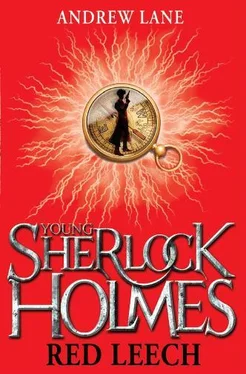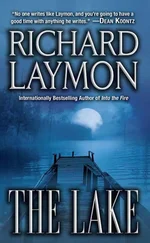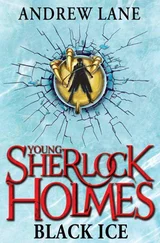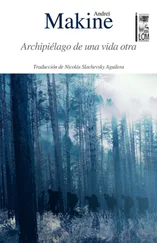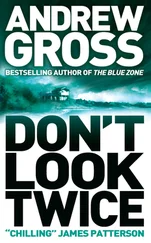Transatlantic Paddle Steamers by H. Philip Spratt (Brown, Son & Ferguson, 1951)
Transatlantic — Samuel Cunard, Isambard Brunel, and the Great Atlantic Steamships by Stephen Fox (HarperCollins, 2003)
The story told aboard the SS Scotia by Captain Judkins, the one about the strange earwig-like creature found holding on to the undersea telegraph cable when it was brought up from the depths of the ocean, is a fabrication of mine, but such creatures do actually exist. Scary, But true. Check out the following website if you don’t believe me:
http://news.ninemsn.com.au/national/1034874/monster-bug-attaches-itself-to-submarine
On the other hand, the giant red leech of Borneo that is known to science is not actually a bloodsucker, but instead eats the giant Borneo earthworm. The leech that Duke Balthassar uses for medical purposes here is, I suggest, a currently unknown species, but given the number of previously unknown species of animal discovered every year, from insects up to mammals, it’s entirely possible that there is a giant red bloodsucking leech out there somewhere. The substance secreted in leech saliva to suppress the clotting of blood is factual: the substance is called hirudin, and leeches are increasingly being used in hospitals to stop potentially dangerous blood clots forming in surgery patients. You still can’t get them on prescription, though.
The large reptiles that chase Sherlock, Matty and Virginia in Duke Balthassar’s animal enclosure are monitor lizards. Monitor lizards can grow up to several metres in length, have a high metabolic rate compared with most other reptiles and can be as intelligent as a small dog (experiments have shown that monitor lizards can count up to six, although no scientist has yet shown what use this is to them).
The laying of the first undersea cables between Ireland and America is one of the nineteenth century’s most incredible stories. I can recommend the following book as a great explanation:
A Thread Across the Ocean — The Heroic Story of the Transatlantic Cable by John Steele Gordon (Simon and Schuster, 2002)
Ferdinand Graf von Zeppelin, who meets with Sherlock on the SS Scotia and then again later, took leave from the German Army in 1863 and travelled to America, where he acted as an observer for the Northern Potomac Army in the American Civil War against the Confederates. Crucially, while there he also met Professor Thaddeus Lowe, who was using tethered balloons as reconnaissance platforms in the Civil War, observing Confederate troop movements on behalf of the Union. All balloon rides had been made off limits to civilians, so instead Professor Lowe sent von Zeppelin to visit his German assistant John Steiner, who could talk to von Zeppelin in German, rather than using von Zeppelin’s halting English. Von Zeppelin made his first ascent with Steiner’s tethered balloon. Fascinated with the possibilities of balloons, von Zeppelin returned to America in the 1870s to talk to Lowe again (although I have moved the date of this trip slightly to make it fit in with the timeline of this book). Later, back in Germany, he would design the rigid balloon — the Zeppelin — that would make him famous.
Detail on New York, and the rest of America, in the 1860s, was provided by:
Transatlantic Crossing — American Visitors to Britain and British Visitors to America in the Nineteenth Century selected and edited by Walter Allen (William Heinemann, 1971)
The Sun and the Moon — The Remarkable True Account of Hoaxers, Showmen, Dueling Journalists and Lunar Man-Bats in Nineteenth-Century New York, by Matthew Goodman (Basic Books, 2008)
Material on the assassination of Abraham Lincoln and the historical aftermath was gleaned from:
“They Have Killed Papa Dead!" — The Road to Ford’s Theatre, Abraham Lincoln’s Murder, and the Rage for Vengeance by Anthony S. Pitch (Steerforth Press, 2008)
It proved strangely difficult to find out very much about American railroads in the 1860s. A map would have been nice, or at the very least a timetable to show me how many changes of train a man would need to make to get from New York to Pennsylvania, but if such books exist then I couldn’t find them. What little detail I did glean came from:
The American Railroad Network, 1861–1890 by George Rogers Taylor and Irene D. Neu (University of Illinois Press, 2003)
Guidebook for Tourists and Travellers over the Valley Railway From Cleveland to Canton (facsimile of the 1880 edition) by John S. Reese (The Kent State Press, 2002)
Bizarrely, there have been several plans by Americans, some associated with the US Government and some not, to take parts of Canada off Great Britain’s hands by force of arms over the years. In 1864, during the American Civil War (or the War Between the States as it was known at the time), a group of Confederate soldiers went through Quebec to get to the US state of Vermont, which was in Union hands. In 1866, two years before this book is set, a group of Irish Americans advocated invading Quebec and Ontario in order to use them as a base from which to strike against Britain in retaliation for what they saw as the British occupation of Ireland. Three times they sent an armed force into Canada — on the second and third attempts they had about a thousand men — but the first attempt just fizzled out and the later two were beaten back by force of arms. Years later, in 1896, Secretary of the Navy H. A. Herbert ordered the US military to construct a plan to seize control of the Great Lakes and St Lawrence when it looked as if a border dispute between Venezuela and the British territory of British Guiana might escalate into war between the USA and Great Britain. Tensions fortunately subsided. Among other sources, I consulted The Straight Dope (www.straightdope.com) for the above information.
As before, I am indebted both to the descendants of Arthur Conan Doyle for giving their permission for me to write these books and to my agent and my editor, Rob Kirby and Rebecca McNally respectively, for giving me the space to do so.
By the time you read these words I should have finished writing the third Young Sherlock Holmes novel. I’m not going to reveal anything about it here, except the fact that it may well take Sherlock and his brother Mycroft to the depths of Siberia. Or it might involve the mysterious Giant Rat of Sumatra (a tale, Conan Doyle later tells us, for which the world is unprepared). Or both. I haven’t decided yet. Keep reading, and you’ll find out.
Andrew Laneis the author of some twenty previous books. Some are original novels set in the same universes as the BBC TV programmes Doctor Who , Torchwood and Randall and Hopkirk (Deceased) , some are contemporary novels written under a pseudonym, and some are non-fiction books concerning specific film and TV programme characters (notably James Bond, and Wallace and Gromit). He has also written for the Radio Times and its US equivalent, TV Guide . Andrew lives in Dorset with his wife, his son and a vast collection of Sherlock Holmes books, the purchase of which over the past twenty years is now a justifiably tax-deductible expense.
